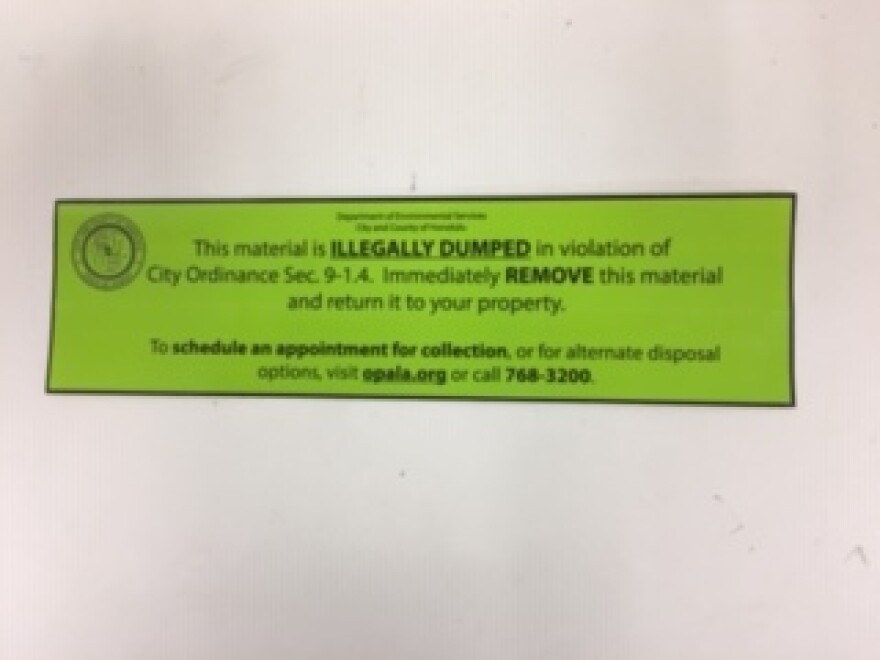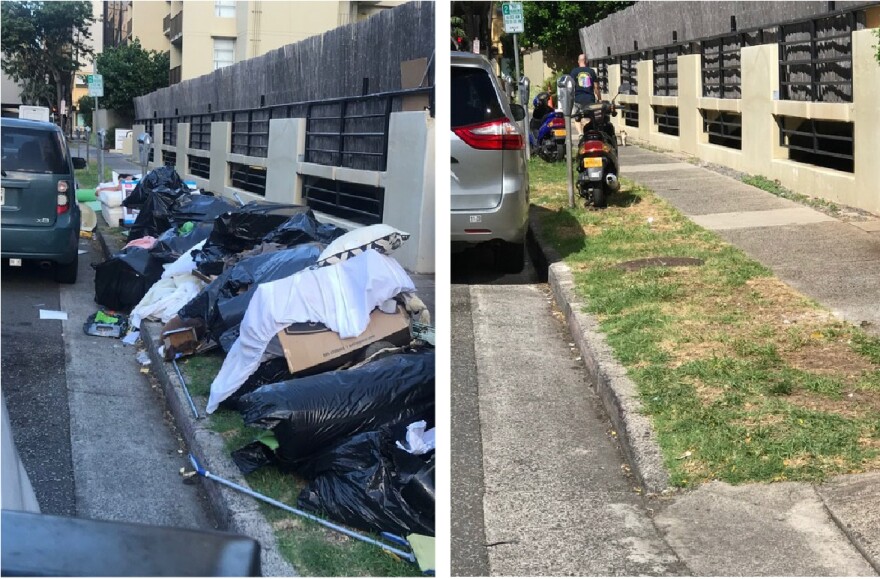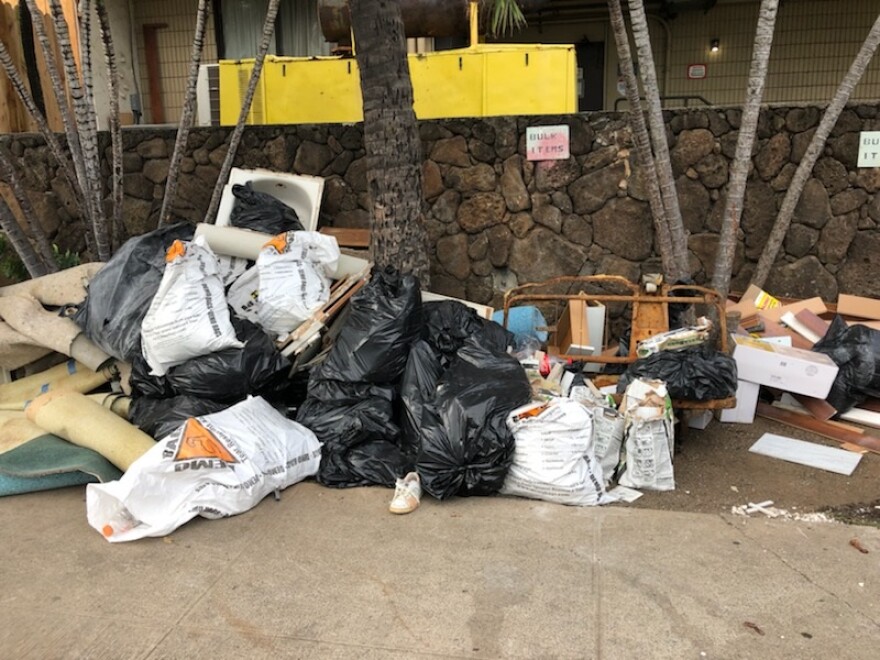The city Department of Environmental Services is fine-tuning its bulky item pickup pilot program following complaints islandwide that mounds of trash have been collecting on the streets.
One major problem contributing to the large amounts of trash is illegal dumping.
The bulky item pilot program began in early June in response to the city’s growing production of waste, said Lori Kahikina, director of environmental services. From 2008 to 2018, Honolulu saw an 80% increase in tonnage of trash.
“It just amazes me how much trash as a community we are generating,” Kahikina said. “We’re the same amount of people but we’re creating much more trash. We’re overwhelming our system.
"If people keep dumping and dumping and dumping, we can’t keep up. It’s not sustainable. Something needs to change.”
The new pilot program covers bulky item collection from Foster Village to Hawaii Kai. It requires residents to make appointments online or by calling 768-3200 to have larger trash items that cannot fit in rubbish containers picked up by the Department of Environmental Services.
According to a 2017 audit of the city’s bulky item collection service, 153 employees received nearly $1.7 million in overtime pay from July 2015 to July 2016. City officials say a more efficient pickup process could save on excessive overtime costs.
However, many Oahu residents have been complaining about trash pile-ups, particularly urban parts of the island. Contributing to the problem are people who put out trash that is not scheduled for pickup next to the items that are. The city will not pick up any unscheduled items.
Officials have spent the last two months trying to educate residents about the process, but next month, they’ll be ramping up efforts to catch illegal dumpers.
The city’s crackdown will result in more notices of violations and imposition of fines. Fines for illegal dumping range from $250 to $2,500.
Officials have also instituted a sticker program in an attempt to curb illegal dumping. The stickers are placed on items that aren't scheduled for pickup. They serve as a warning to those who are dumping illegally.
“When you see the sticker, and it’s your item, pull it back because you don’t have an appointment,” said Kahikina. “Our trucks are coming in, and they’re just going to pick up items that were on the appointment.”
The city confirms it has spent $2,000 on the stickers thus far and issued 2,800 stickers.

The stickers have been met with some skepticism.
State Rep. Takashi Ohno says he does not think the stickers are effective in dealing with illegal dumpers. Instead, he says, residents in the dumping hot spots are the ones left holding the bag.
“Neighbors have told me that people come at night and drive by quickly, drop their stuff off, and get out of there even faster,” said Ohno. “I don’t think this is something that many of the residents are responsible for. They’re at the whim of these passer-byers who do the illegal dumping.”
The representative says that hot spots in his district include Kuikini Street, Liliha Street, and Kunawai Park. Many of the spots are not private properties but near city parks.
Outside of Ohno’s district, the city reports that 45 out of its 98 identified hot spots for trash piles are in Kalihi.
City Council member Joey Manahan, who represents part of Kalihi, said it will take time for people to learn about the pickup rules, especially for those changing addresses.
“There are these hot spots, but I do think it’s because the transient nature of certain residents who take advantage of, basically, when they move, they throw their bulky items on the street,” said Manahan. “They take for granted that it’s going to get picked up.”
Ohno is proposing that the state get involved with the collection program, citing problems with law enforcement and potential health issues.
He is worried that vermin, such as rats or bugs, could burrow into the neglected trash. He’s hoping to work with state Department of Health officials to see if it can help haul away the trash.
He further plans to re-introduce a bill during the next legislative session that would help prosecute illegal dumpers. Under the measure, witnesses can provide statements, photographs and video recordings to law enforcement officials investigating illegal dumping.
Manahan says the data collected from the pilot program, scheduled to end in January, will determine whether the city will continue to require appointments for bulky item pickups. The pilot program could be extended if needed.

Meanwhile, Kahikina says she’s seen progress in locations like Nohonani Street in Waikiki and remains optimistic that conditions in other areas can improve.
“I can’t stress enough the hot spots that people have been identifying have always been there,” she said. “They’re saying the bulky item program is making it worse, but I tend to disagree.”



